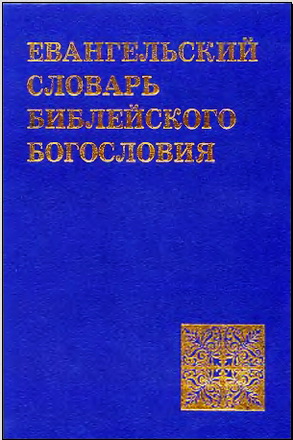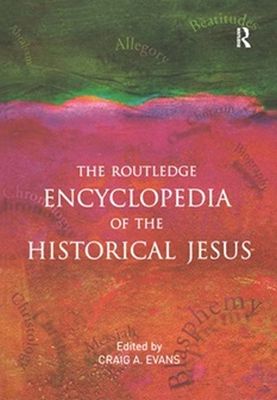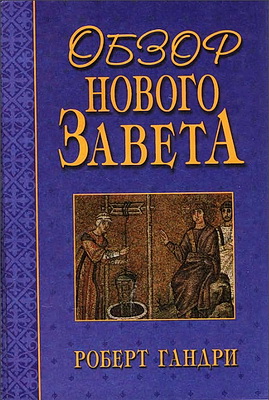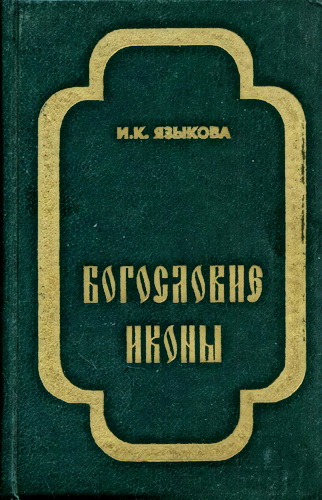
Evans - Encyclopedia of the Historical Jesus
Craig A. Evans - Encyclopedia of the Historical Jesus
New York: Routledge, 2014. – 732 p.
ISBN: 0-415-97569-7
ISBN: 978-0-415-97569-8
Interest in the historical Jesus continues unabated. Scholarly and popular publications are more numerous than ever. Some of this work is quite eccentric and irresponsible, but much of it is competent and quite helpful, leading to new insights and, on the whole, advancing the discipline in significant ways.
Research into the life and world of Jesus has also become more complex as new discoveries are made and new approaches and methods are explored. Ongoing publication of primary materials, such as ancient manuscripts from the Middle East, and ongoing archaeological excavations in the land of Jesus and his followers have led to many new discoveries. The Jesus of history was never more interesting and challenging. And with these major advances comes the need for expert guidance. The Encyclopedia of the Historical Jesus offers this guidance through the entries written by the 110 international scholars who have shared their expertise.
The Encyclopedia of the Historical Jesus is a reference work that assesses – in 227 entries totaling nearly 500,000 words – the remarkable discoveries and developments of the last half century or so. For ease of access, the entries are arranged alphabetically. To further aid the reader, the front matter presents both an A–Z entry list and a thematic entry list . Each entry is thoroughly referenced with a Further reading section. A thorough, analytical index provides another entry point for the interested user.
These entries speak to all of the areas involved in the study of the historical Jesus. The Encyclopedia offers several entries treating the major contributors and their works , ranging from H. S. Reimarus of more than two centuries ago to N. T. Wright of today. All of the important theoretical issues and concepts are treated, including Christology, demons and exorcism, magic and sorcery, and Jesus tradition in Paul.
The Encyclopedia offers several entries addressing methods and criteria , such as the language of Jesus, the possibility of recovering the very words of Jesus, the criteria for determining authenticity, and critical assessment of the New Testament Gospels and the various writings outside the New Testament. The New Testament Gospels themselves are treated in separate and lengthy entries. Several entries assess the various background literatures , such as the Old Testament apocrypha and pseudepigrapha, the Dead Sea Scrolls, the Targums, and rabbinic literature. Inscriptions and papyri are taken into account, as well as the writings that make up the Old Testament itself.
The teaching of Jesus is treated under some three dozen headings. His views of evangelism, divorce and remarriage, faith, family, love, and suffering are only a few of the entries. Major entries treat Jesus’ understanding of God, the Great Commandment, salvation, and the Sermon on the Mount. The titles of Jesus is another major category that is treated with a number of very important entries. These include Messiah/Christ, Lord, Master/rabbi, Servant of the Lord, Son of David, Son of God, and Son of Man. The entries in teachings within the historical context of ethics place the teaching of Jesus in the broader context of the philosophy and teaching of antiquity. Comparison is made with rabbinic thought, and even Buddhist thought.
The Encyclopedia offers several entries, many of them major, that treat the most important events and related scholarship in the life of Jesus and his disciples. These include his baptism, his exorcisms and healings, his entry into Jerusalem, his actions in the Temple precincts, his words at the Last Supper, his trial, his death and burial, and his resurrection and ascension. Several entries are devoted to important figures in the life of Jesus . These include Herod Antipas, who ruled Galilee, and Pontius Pilate, the Roman governor who administered Samaria and Judea. Readers will find entries that treat Annas and Caiaphas, the high priests, Pharisees, Sadducees, and several of the disciples and companions of Jesus, such as Simon Peter, James and John, sons of Zebedee, Mary Magdalene, and Mary, the mother of Jesus.
* * *
Exorcisms and Healings
Jesus’ ability to heal and exorcize was a very significant facet of his ministry, a facet that impacted his contemporaries enormously, not only during the pre-Easter ministry itself, but for generations after. For Jesus, healing and exorcism demonstrated the reality of the rule of God, a reality that lay at the very heart of his proclamation (cf. Mark 1:14–15; Luke 11:20). For the disciples of Jesus, healing and exorcism continued to demonstrate the reality of the proclamation of Jesus and even provide proof of the divine authority of Jesus himself. Even long after the time of Jesus and his original followers, his name was invoked by exorcists and healers.
Exorcism and healing in the ministry of Jesus
His surprising ability to heal and exorcize, noted by Josephus and other non-Christians, placed Jesus in a class by himself. Jesus’ authority to heal and cast out demons is seen at the very beginning of his ministry. The first story of exorcism recounted by the Markan evangelist reads as follows (Mark 1:21–27):
21 And they went into Capernaum; and immediately on the sabbath he entered the synagogue and taught. 22 And they were astonished at his teaching, for he taught them as one who had authority, and not as the scribes. 23 And immediately there was in their synagogue a man with an unclean spirit; 24 and he cried out, “What have you to do with us, Jesus of Nazareth? Have you come to destroy us? I know who you are, the Holy One of God.” 25 But Jesus rebuked him, saying, “Be silent, and come out of him!” 26 And the unclean spirit, convulsing him and crying with a loud voice, came out of him. 27 And they were all amazed, so that they questioned among themselves, saying, “What is this? A new teaching! With authority he commands even the unclean spirits, and they obey him.”
This initial exorcism alludes to the eschatological implications of Jesus’ proclamation: “The time is fulfilled, and the kingdom of God is at hand; repent, and believe in the gospel” (Mark 1:15). Moreover, only shortly before, the evangelist had narrated Jesus’ wilderness encounter with Satan and his allies: “And he was in the wilderness forty days, tempted by Satan; and he was with the wild beasts; and the angels ministered to him” (Mark 1:13). Accordingly, when the frightened spirit asks Jesus, “What have you to do with us, Jesus of Nazareth? Have you come to destroy us? I know who you are, the Holy One of God” (1:24), he has acknowledged Jesus’ role as Satan’s eschatological adversary. The unclean spirit knows who Jesus is and therefore knows what Jesus intends to do.
Why Jesus rebuked the spirit and commanded it to “be silent” (1:25) is made clear in the next exorcism to be narrated: “And he healed many who were sick with various diseases, and cast out many demons; and he would not permit the demons to speak, because they knew him” (1:34). Jesus silences the evil spirits, “because they knew him,” as seen in the earlier exorcism: “I know who you are, the Holy One of God” (1:24). There is no messianic secrecy theme at work here. The explanation has to do with exorcism. The spirit’s declaration that it knows who Jesus is is meant as a threat. Knowing the name of the exorcist affords the evil spirit the opportunity to thwart, perhaps even harm the exorcist (just as knowing the name of the evil spirit aids the exorcist). But Jesus silences the spirit and orders its immediate departure.
Jesus needs no exorcistic formula and no paraphernalia, as do other exorcists (as will be seen in the examples considered below). He orders the spirit to come out of the afflicted person and the spirit obeys (1:26–27). The onlookers are astonished, not because the exorcism is successful, but because Jesus achieved it with a spoken word and without supporting gimmickry. It is no wonder that Jesus’ word and action are dubbed “A new teaching [ didache ] with authority” (1:27). Years later, when Paul defeats his opponent Bar-Jesus, the Roman consul similarly is astonished at “the teaching [ didache ] of the Lord” (Acts 13:12).
The power and reputation of Jesus are such that unclean spirits fall before him and confess him as “the Son of God” (Mark 3:11). These spirits not only know who Jesus is, they fear and respect him. Jesus’ critics, however, view his success in a very different light: “And the scribes who came down from Jerusalem said, ‘He is possessed by Beelzebul, and by the prince of demons he casts out the demons”’ (3:22). Jesus attacks the logic of the accusation, concluding that “if Satan has risen up against himself and is divided, he cannot stand, but has an end” (3:26). Although in the RSV the last part of the statement is rendered “is coming to an end,” the Greek literally reads: “has an end [τέλος ἔχει].” We have an exact parallel in the Testament of Moses , a Palestinian document that originated sometime around 30 CE, or shortly before. After a period of suffering, the kingdom of God will appear and the power of Satan will be broken: “And then His kingdom shall appear throughout all His creation, and then Satan will have an end” (10:1). The second line, “will have an end [ finem habebit ],” which is in the future tense, anticipates what Jesus says is happening in his ministry, a ministry in which the rule of God is proclaimed and the demise of the rule of Satan is demonstrated through exorcism. ( Evans 2005 : 62, 67).
Jesus’ power over Satan’s kingdom is dramatically illustrated in the story of the demonized man in Mark 5:1–20. Part of the story reads:
2 And when he had come out of the boat, there met him out of the tombs a man with an unclean spirit, 3 who lived among the tombs; and no one could bind him any more, even with a chain; 4 for he had often been bound with fetters and chains, but the chains he wrenched apart, and the fetters he broke in pieces; and no one had the strength to subdue him. 5 Night and day among the tombs and on the mountains he was always crying out, and bruising himself with stones. 6 And when he saw Jesus from afar, he ran and worshiped him; 7 and crying out with a loud voice, he said, “What have you to do with me, Jesus, Son of the Most High God? I adjure you by God, do not torment me.” 8 For he had said to him, “Come out of the man, you unclean spirit!” 9 And Jesus asked him, “What is your name?” He replied, “My name is Legion; for we are many.” (5:2–9)
People of Jesus’ time would have found this description of the demonized man terrifying. In some incantation texts the demons are said to be “bound with chains” (e.g. Gordon 278: “Bound is the bewitching lilith … with a chain of iron on her neck”). Accordingly, the claim that not even chains and fetters could restrain the demonized man would have been very frightening to Jesus’ contemporaries and Mark’s original readers. Indeed, his amazing strength may have recalled Samson, a biblical hero renown for his great strength (see Aus 25–30).
Furthermore, the macabre details of this man’s existence – living among tombs and howling night and day – would have added to the frightening picture. The people of late antiquity, including Jews, believed that the cemetery and necropolis were the haunts of ghosts and demons (cf. LXX Ps 67:6; Isa 65:1–7). And finally, the name “Legion” (Gk. λεϒιών) itself would have brought to mind the feared Roman legion (Latin: legio ). A demonized man such as this presented Jesus with a formidable opponent. And yet it is Jesus who frightens the man possessed with the demonic legion. He implores Jesus: “I adjure you by God, do not torment me” (5:7).
Jesus shares his remarkable power with his apostles:
And he appointed twelve, to be with him, and to be sent out to preach and have authority to cast out demons … And he called to him the twelve, and began to send them out two by two, and gave them authority over the unclean spirits.
(Mark 3:14–15; 6:7)
Jesus’ ministry of healing and exorcism, now multiplied through his apostles, becomes known throughout Galilee. Reports of his ministry even reach the ears of the tetrarch Herod (Mark 6:13–16):
14 King Herod heard of it; for Jesus’ name had become known. Some said, “John the baptizer has been raised from the dead; that is why these powers are at work in him.” 15 But others said, “It is Elijah.” And others said, “It is a prophet, like one of the prophets of old.” 16 But when Herod heard of it he said, “John, whom I beheaded, has been raised.”
Herod’s conjecture that Jesus must be John the Baptist, whom he earlier had beheaded but now has returned from the dead, is amazing. Evidently, Herod thinks that the power of Jesus is so great, it can only be explained as a power that has been brought back from the unseen world of spirit. To be sure, Herod’s conclusion is faulty, but it does bear significant witness to Jesus.
Jesus’ reputation continues to grow, to the point that he cannot be in public without being recognized and pursued (Mark 6:54–56; cf. 5:27–29). The power of Jesus is such that he can heal and exorcize at a distance (Mark 7:24–30; John 4:46–54) and cast out a troublesome demon that had withstood other exorcists for years and could even hold its own against the disciples of Jesus (Mark 9:14–29).
At least one contemporary professional exorcist began making use of Jesus’ name during his lifetime. In Mark 9:38–40 we learn of an exorcist, outside Jesus’ following, who casts out demons in the name of Jesus.
38 John said to him, “Teacher, we saw a man casting out demons in your name [[ἐν τῷ ὀυóµατí σoυ ἐκßάλλoυτα δαıµóυıα], and we forbade him, because he was not following us.” 39 But Jesus said, “Do not forbid him; for no one who does a mighty work in my name will be able soon after to speak evil of me. 40 For he that is not against us is for us.
What is remarkable is that this activity evidently was taking place during the pre-Easter ministry. The probability that this is authentic pre-Easter tradition is seen in the remarkable response of Jesus, which stands in tension with early Christian teaching and practice, in which only Christian leaders, especially the apostles, have the authority to invoke the name of Jesus for purposes of healing and exorcism. This point is dramatically illustrated in Acts, in the story of the young slave girl with the python spirit (Acts 16:16–18) and in the story of the seven sons of Sceva, the Jewish high priest (Acts 19:13–20). Not just anyone can invoke the name of Jesus, even professional soothsayers and exorcists. Given the probability that we have here the post-Easter Christian perspective, it is more than probable that the story found in Mark 9 represents genuine pre-Easter tradition.
In a lengthy section in which he is accused of being in league with Beelzebul (Matt 12:22–45), Jesus asserts: “Behold, something greater than Solomon is here [πλε ι ⌢ oν Σoλoµ ω ⌢ νoϛ ω ‘ ⌢ δε]!” (Matt 12:42). The assertion that someone important is “here” ( ω ‘ ⌢ δε) is echoed in many incantations considered (e.g. “Abraham dwells here [ ω ‘ ⌢ δε]”). The comparison with Solomon seems to imply that Jesus is greater than Solomon, not simply in wisdom but also in matters of healing and exorcism, for which Israel’s famous monarch was well known.
There are many traditions in late antiquity, in which reference is made to Solomon and his authority over evil spirits. One well-known story, in which Solomon the master exorcist appears, is related by Josephus ( Ant . 8.46–49):
I have observed a certain Eleazar, of my race, in the presence of Vespasian, his sons, tribunes and a number of other soldiers, release people possessed by demons [ὐπò τ ω ⌢ υ δαıµoυíωυ λαµßαυoµέυouϛ ἀπoλὐoυτα τoὐτωυ]. Now this was the manner of the cure: Placing to the nostrils of the demon possessed person the ring which had under the seal a root which Solomon had prescribed [τòυ δακτὐλıoυ ἒχoὑτα ὑπò τ η ⌢ σϕραγ ι ⌢ δι ῥíζαυ ἐξ ω ‘ ⌢ υ ὑπεδεıξε Σoλóµωυ], he then, as the person smelled it, drew out the demon through the nostrils. When the person fell down, he adjured the demon, speaking Solomon’s name and repeating the incantations that he had composed, never to re-enter him. Then, wishing to persuade and to prove to those present that he had this ability, Eleazar would place at a small distance either a cup full of water or a foot basin and command the demon while going out of the human to overturn it and to make known to those watching that he had left him. And when this happened, the understanding and wisdom of Solomon were clearly revealed, on account of which we felt compelled to speak in order that all might know of the greatness of his nature and divine favor, and that the surpassing virtue of the king might not be forgotten by anyone.
The ring, the seal, and the name of Solomon all appear in various exorcistic traditions, including various incantations and spells and the pseudepigraphal work known as the Testament of Solomon (see Duling 1985 ; Gordon 273–76).
Exorcism and healing in the name of Jesus
Jesus’ fame as exorcist and healer lived on. Pagans and Jews, as well as Christians, invoked his name in a variety of incantations, amulets, and magical papyri. One pagan charm instructs the patient to conjure, by saying: “I adjure you by the God of the Hebrews, Jesus …” The charm goes on to appeal to the seal (ring) of Solomon ( PGM IV.3007–41).
A phylactery appeals: “[The] one God and his Christ, help Alexandra” (Louvre Museum no. MND 274.6). Another charm warns an evil spirit: “In the name of the Lord Jesus Christ, I denounce you, most foul spirit of Tartarus, whom the angel Gabriel bound with burning fetters” ( CIL III.961). An exorcistic incantation appeals to Jesus Christ, the Nazarene and to his holy apostles and angels to drive out an evil spirit (Froehner no. 1212). Yet another amulet, worded as a prayer, petitions Jesus: “Protect, Lord, son of David according to the flesh [cf. Rom 1:3–4], the one birthed by the holy virgin Mary, holy, most high God, from holy Spirit” (P.Oslo gr. 5). Many more can be cited (for original language, bibliography, and comments on the texts that have been cited, see Betz; Kotansky 1994 ).
What we see in these incantations, prayers, and curses, many of which date to three or more centuries after the time of Jesus, is a continuation of a tradition that had its origins in the time of Jesus’ ministry. Long before Easter and the Christian movement’s proclamation of the resurrection and heavenly enthronement of its Lord and Master, professional healers and exorcists of all stripes had begun to invoke the name of Jesus. One of the elements of Jesus’ ministry that impacted his contemporaries, for which he would be remembered by many succeeding generations, was his ability to heal and cast out evil spirits.
Craig A. Evans
Further reading
- Aus, R. D. “My Name is ‘Legion’: Palestinian Judaic Traditions in Mark 5:1–20 and Other Gospel Texts,” Sjla , Lanham, MD: University Press of America, 2003.
- Betz, H. D. (ed.) The Greek Magical Papyri in Translation, Including the Demotic Spells: Volume One: Texts , second edition, Chicago, IL: University of Chicago Press, 1992.
- Brown, C. Miracles and the Critical Mind , Grand Rapids, MI: Eerdmans, 1984.
- Duling, D. C. “Solomon, Exorcism, and the Son of David,” Htr 68 (1975) 235–252.
- Duling, D. C. “The Eleazar Miracle and Solomon’s Magical Wisdom in Flavius Josephus’s Antiquitates Judaicae 8:42–49,” Htr 78 (1985) 1–25.
- Chilton, B. D. Jesus’ Baptism and Jesus’ Healing: His Personal Practice of Spirituality , Harrisburg, PA: Trinity Press International, 1998.
- Evans, C. A. “Defeating Satan and Liberating Israel: Jesus and Daniel’s Visions,” Journal for the Study of the Historical Jesus 1 (2003) 161–170.
- Evans, C. A. “Inaugurating the kingdom of God and Defeating the Kingdom of Satan,” Bbr 15 (2005) 49–75.
- Evans, C. A. “Jesus’ Exorcisms and Proclamation of the kingdom of God in the Light of the Testaments,” in I. H.Henderson and G. S.Oegema (eds) The Changing Face of Judaism, Christianity, and Other Greco-Roman Religions in Antiquity , Studien zu den Jüdischen Schriften aus hellenistisch-römischer Zeit 2, Gütersloh: Gütersloher Verlagshaus, 2006, pp. 210–233.
- Eve, D. The Jewish Context of Jesus’ Miracles , JSNTSup 231, London and New York: Sheffield Academic Press, 2002.
- Gordon, C. H. “Aramaic Incantation Bowls,” Orientalia 10 (1991) 116–141, 272–280.
- Kotansky, R. D.Greek Magical Amulets: The Inscribed Gold, Silver, Copper, and Bronze Lamellae . Part I: Published Texts of Known Provenance , Sonderreihe Papyrologica Coloniensia 22/1, Opladen: Westdeutscher Verlag, 1994.
- Labahn, M. and Peerbolte, B. J. L. (eds) Wonders Never Cease: The Purpose of Narrating Miracle Stories in the New Testament and Its Religious Environment , LNTS 288, London and New York: T. & T. Clark International, 2006.
- Latourelle, R. The Miracles of Jesus and the Theology of Miracles , New York: Paulist, 1988.
- Meier, J. P. A Marginal Jew: Rethinking the Historical Jesus . Volume Two: Mentor, Message, and Miracles , ABRL 9; New York: Doubleday, 1994.
- Moule, C. F. D. (ed.) Miracles: Cambridge Studies in their Philosophy and History , London: Mowbray, 1965.
- Pilch, J. J. Healing in the New Testament: Insights from Medical and Mediterranean Anthropology , Minneapolis, MN: Fortress Press, 2000.
- Preisendanz, K. Papyri Graecae Magicae: Die griechischen Zuaberpapyri , 2 vols, Stuttgart: Teubner, 1973–74.
- Shel, E. “Jesus the Exorcist in Light of Epigraphic Sources,” in J. H.Charlesworth (ed.) Jesus and Archaeology , Grand Rapids, MI: Eerdmans, 2006, pp. 178–185.
- Twelftree, G. H. Jesus the Exorcist: A Contribution to the Study of the Historical Jesus , WUNT 2.54, Tübingen: Mohr Siebeck, 1993; repr. Peabody, MA: Hendrickson, 1993.
- Twelftree, G. H. Jesus the Miracle Worker: A Historical and Theological Study , Downers Grove, IL: InterVarsity Press, 1999.
- Wenham, D. and C. L.Blomberg (eds) The Miracles of Jesus , Gospel Perspectives 6, Sheffield: JSOT Press, 1986.




Комментарии
Пока нет комментариев. Будьте первым!